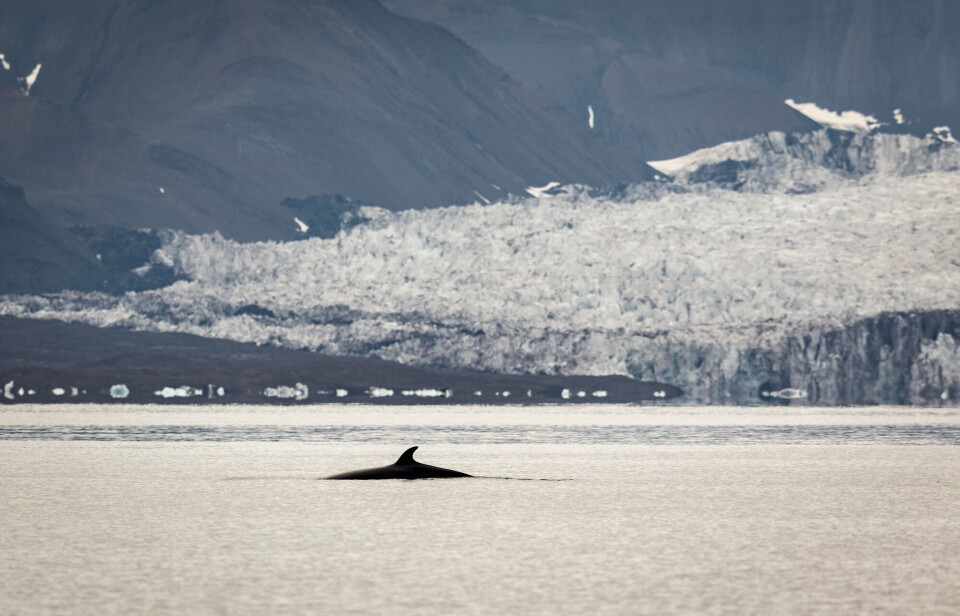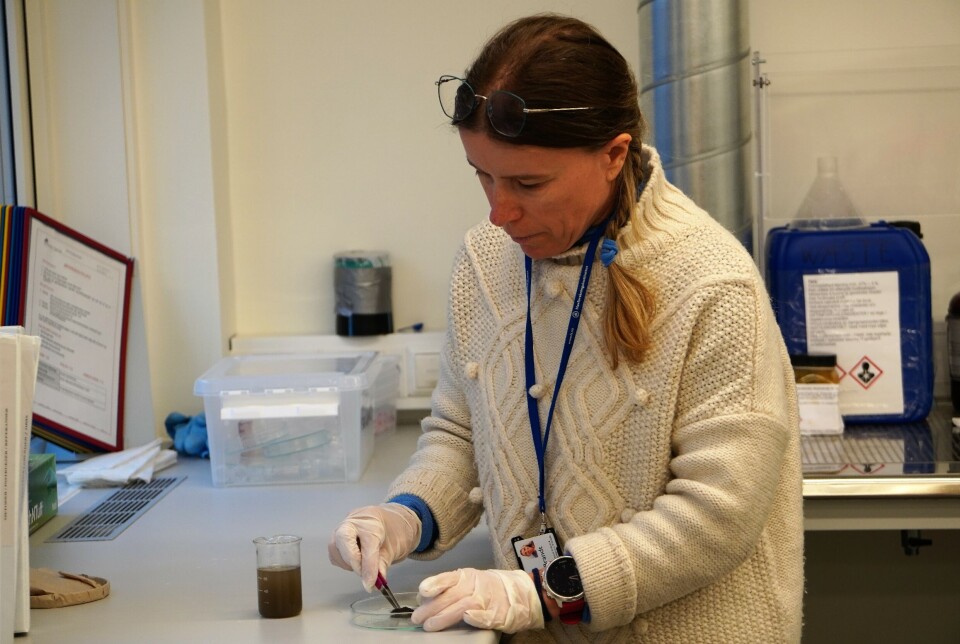THIS ARTICLE/PRESS RELEASE IS PAID FOR AND PRESENTED BY the Institute of Marine Research - read more

Minke whales around Svalbard excrete 600 tonnes of poo each day
Whale faeces contain large quantities of nutrients that are important to the ocean ecosystem, according to a new study.
During summer, 15,000 minke whales come to Svalbard to feed, and each one of them produces around 40 kilos of faeces per day. That makes 600 tonnes of whale poo in total.
It may sound disgusting, but for the ecosystem it is worth its weight in gold.
The important phytoplankton
In recent years, various marine scientists have started wondering whether whale faeces could increase primary production in the ocean. In other words, whale poo might be significant to the important phytoplankton blooms – which are vital to the whole food chain and everything that lives in the ocean.
Their idea is simply that the faeces fertilise the ocean in the same way that cattle and sheep fertilise the land.
The poo floats
Unlike fish and zooplankton faeces, which sink to the sea bottom, whale faeces float on the surface. Precisely where phytoplankton blooms in the spring and summer.
“The problem has been that no-one has really known how much nutrients the whales excrete, and how much that contributes to phytoplankton production,” marine scientist Carla Freitas says.
In the past, scientists have collected samples of faeces from the water, where nutrients were already dissolving. But this time the researchers took them directly from the faeces of minke whales that had been caught by commercial whalers.

Phosphorus and nitrogen were most important
After analysing the samples, the scientists found that the most important nutrients in the faeces were phosphorus and nitrogen.
Then they calculated the quantity of nutrients excreted each day by the 15,000 minke whales in the Svalbard area during summertime.
Answer: 10 tonnes of phosphorus and 7 tonnes of nitrogen each day.
“Based on a rough estimate, the minke whale poo contributes around 0.2 to 4 per cent of the daily phytoplankton production in the area. That may not sound like much, but it is actually quite a significant contribution,” Freitas says.
These findings were recently published in the journal Progress in Oceanography.
First poo, then pee
But whales don’t just poo. They also pee.
Most mammals excrete urea, which contains nitrogen, amongst other things.
“So now we are going to continue our research by looking at the nutrients in whale urine,” Freitas says.
The urine samples will once again come from commercial whalers.
“We have already received the samples, which we have started analysing,” she says.
Reference:
Freitas et al. Nutrient concentrations in minke whale faeces and the potential impact on dissolved nutrient pools off Svalbard, Norway, Progress in Oceanography, vol. 210, 2023. DOI: 10.1016/j.pocean.2022.102927

This article/press release is paid for and presented by the Institute of Marine Research
This content is created by the Institute of Marine Research's communication staff, who use this platform to communicate science and share results from research with the public. The Institute of Marine Research is one of more than 80 owners of ScienceNorway.no. Read more here.
See more content from the Institute of Marine Research:
-
These whales have summer jobs as ocean fertilisers
-
Have researchers found the world’s first bamboo coral reef?
-
Herring suffered collective memory loss and forgot about their spawning ground
-
Researchers found 1,580 different bacteria in Bergen's sewage. They are all resistant to antibiotics
-
For the first time, marine researchers have remotely controlled an unmanned vessel from the control room in Bergen
-
New discovery: Cod can adjust to climate change – from one generation to the next




































